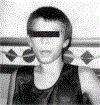Five new subjects with ring chromosome 22
- PMID: 12752574
- PMCID: PMC6714054
- DOI: 10.1034/j.1399-0004.2003.00064.x
Five new subjects with ring chromosome 22
Abstract
Ring chromosome 22, a rare cytogenetic finding, was first described by Weleber et al. in 1968. Since then approximately 50 patients have been reported in the medical literature. We describe five previously unreported subjects with ring chromosome 22 syndrome, summarize the clinical findings of reported patients from the literature and discuss the involvement of the ring chromosome and clinical outcome. Our subjects demonstrated the prominent features of this syndrome including mental retardation, hypotonia, motor delay, lack of speech, full eyebrows, and large ears. In addition, two of our subjects had central nervous system malformations and regression. The lack of consistent physical abnormalities in our subjects further supports no consistent phenotype manifestations in this cytogenetic syndrome. The variable clinical manifestations seen in ring chromosome 22 subjects may be associated with loss of chromosome 22 sequences near the telomere or attributed to the genetic background of each subject. Similarly, recessive alleles unmasked by the deletion could also contribute to the phenotype.
Figures


References
-
- Weleber RG, Hecht F, Giblett ER. Ring G chromosome a new G deletion syndrome? Am J Dis Child 1968: 115: 489–494. - PubMed
-
- Severien C, Felix S, Bartholome K. Ring chromosome 22: a case report. Klin Padiatr 1991: 203: 467–469. - PubMed
-
- Sovner R, Stone A, Fox C. Ring chromosome 22 and mood disorders. J Intell Dis Res 1996: 40: 82–86. - PubMed
-
- MacLean JE, Teshima IE, Szatmari P, Nowaczyk MJ. Ring Chromosome 22 and autism: report and review. Am J Med Genet 2000: 90: 382–385. - PubMed
-
- Hunter AGW, Ray M, Wang HS, Thompson DR. Phenotypic correlations in patients with ring chromosome 22. Clin Genet 1977: 12: 239–249. - PubMed
MeSH terms
Grants and funding
LinkOut - more resources
Full Text Sources
Medical

